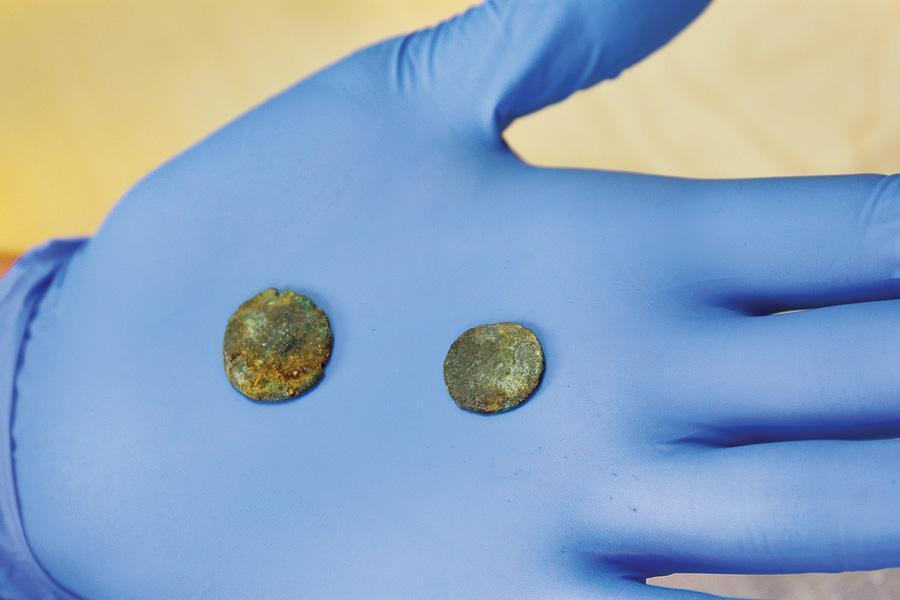Bronze coins shed light on Parion’s history
ÇANAKKALE – DHA

During the excavations in the ancient city of Parion - the port city of the Roman Empire 2,700 years ago - 466 bronze coins have been found.
The preservation and restoration work on the coins have been continuing in the laboratory, and they provide information about the destruction of the defense walls surrounding the ancient city.
“We already thought that there was a Goth invasion in the last quarter of the third century in the city. The presence of these coins is important to support this argument,” said archaeologist Sadık Sulan, deputy head of excavations.
The excavations started in 2005 the old port city, located in Kemer village in the Biga district in the northwestern province of Çanakkale, and have been continuing with a team headed by Professor Vedat Keleş of Samsun’s Nineteen May University.
Parion has been hosting archaeologists since April of this year. It is one of the ancient cities where excavations will continue throughout the year as a result of a recent decision by the Culture and Tourism Ministry.
“Excavations in 20 ancient cities will continue for 12 months thanks to this decision. Parion is currently in the process of adapting to it. This is very important both as a presentation of scientific data to the scientific world and as a tourism destination of our country,” Sulan said.
The city was colonized by Greeks in the last quarter of the eighth century. In the Peloponnesian War, Alcibiades anchored its 86 galleys in the port, Sulan said.
The city was also a cult center during the Hellenistic period. Most of the buildings that have been unearthed now belong to the Roman period, Sulan said.
“Parion lived its richest era in Roman times,” he said. “The city progressed in the Caesar, Augustus and Hadrianus periods as colonization ports, especially in terms of public works and housing. The city is also very important for the region in terms of fishing. From ancient sources we know that there was a fishing guild.”
[HH] Solving the city’s defense system
Sulan stated that this year’s excavations started from the northern city walls in the north of the city.
He described the steps the team has taken to find and preserve the history at the ancient site:
“These works are carried out by going down to the certain levels, and we unearth the finds. These include both ceramic and sculpture pieces. We recently found 466 coins in a terracotta pot. Unfortunately, these bronze coins are in poor condition. Following the preliminary examination of our head Vedat Keleş, who is also a numismatist, we saw that there was a coin belonging to the fourth century, the Valentinian period. These coins are actively and passively protected by conservators in the laboratory. They will be evaluated by experts and presented to the world of science. These coins are very important to us. We thought that there was a Goth (people from the north) invasion in the last quarter of the third century in the city. The presence of these coins is important in support of this argument. It is also important for the dating of the city wall to understand the phases of the ancient city of Parion. There is an important phase of destruction. Destruction occurred in the fourth and fifth centuries. It will be important for the region to solve this. Parion will be an important center for the region and country as a tourism destination.”
Sulan said that the destruction of the ancient city could be seen from the city walls, and added: “The area where we are working has been better protected than other regions. The constant attacks on the region led Parion to strengthen its defense system. Parion was a well-protected city. Therefore, both the outer and inner walls were built. One aim of our work is to solve the defense system of the city.”
Inscriptions found in Parion in 2014 revealed that the city was the most important colonial city in the region and perhaps in all of Anatolia. They also provided important clues about economic, military and architectural activities in the area, which were supported by theater excavations.
Parion’s odeon, a building for musical events, could hold 200 people, making it one of the biggest in Anatolia.
















